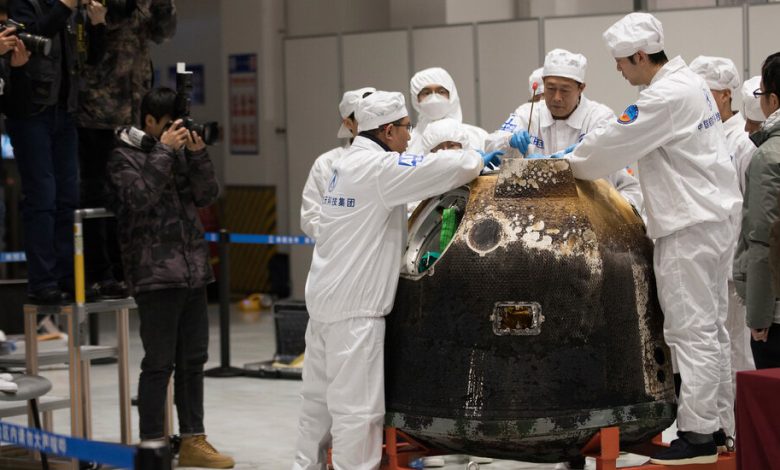China’s Discovery of Lunar Mineral Could Add to Fuller View of the Moon

Chinese scientists recently announced their discovery of a new lunar mineral among samples collected from the moon during a mission two years ago, adding to the body of knowledge of the Earth’s satellite that had been the focus of earlier space exploration.
The scientists found a single crystal of a new phosphate mineral that they have named Changesite-(Y) while analyzing particles of lunar basalt, or hardened fragments of lava, The Global Times, a state-run newspaper and website, reported.
The discovery was announced last Friday and was connected to Chang’e-5, a mission that has succeeded in retrieving lunar samples as part of more ambitious plans for space exploration by China. In December 2020, it became the first country in about four decades to bring back lunar rocks and soil, amassing several pounds of samples, experts said.
The Commission on New Minerals, Nomenclature and Classification, a body of the International Mineralogical Association that reviews the introduction of minerals and their naming, confirmed Changesite-(Y) as a new mineral, according to the China National Space Administration.
Lunar samples are the “coin of the realm” for understanding planetary evolution, said James Head, a professor of geological sciences at Brown University.
The analysis of samples that had been collected by NASA decades ago, during the era of the Apollo moon landings and then the Luna robotic landers of the Soviet Union, has helped scientists better understand what formed the moon.
Scientists say that those findings, along with the results of recent computer modeling, support a theory that the moon was created out of the debris left from a collision between Earth and a Mars-size planetary body.
Across the six Apollo missions, conducted between 1969 and 1972, NASA amassed 2,200 samples, or 382 kilograms of “lunar rocks, core samples, pebbles, sand and dust from the lunar surface,” the agency said. NASA continues to study samples from the Apollo missions and recently unsealed one of its remaining samples in preparation for the Artemis missions to the moon, the agency said in a March news release.
New samples, gathered from different locations on the moon, will expand the existing knowledge of the planet’s “volatile reservoirs and geologic evolution,” NASA said in a statement.
To date, most sampling has targeted the central part of the near side of the moon, the hemisphere that faces Earth, Professor Head said.
New minerals discovered on the moon are not abundant, said Clive Neal, a professor of planetary geology at the University of Notre Dame. The first was armalcolite, found during the Apollo 11 mission; the term is a portmanteau referring to the mission’s three astronauts.
Upcoming expeditions, which include efforts by both China and the United States, are targeting unexplored territory on the moon. Samples from “other geologically interesting sites,” especially from younger terrain on the planet, could help broaden scientists’ understanding of how the moon evolved, Professor Neal said.
“The moon is still revealing some interesting secrets,” he added.





